Handscapes of Fulfillment

Rachel Mulder / 2019
Yale School of Architecture
“The hand is the tool of tools.” -Aristotle
What is the role of the hand in the landscape of fulfillment? Following an interest in how humans fit into vast and illusive logistical systems, this project offers an investigation of the hand and the fulfillment center through representation. The hand is complicated figure (Fig. A). As a symbol of the worker, it represents a problematic relationship both in terms of a public image (Amazon workers have made strenuous working conditions public knowledge [1]) and how the worker is incorporated into the fulfillment system. Amazon’s global workforce employs over 613,000 workers and roughly 100,000 temporary workers. On average, US employees are paid $15/hr and during peak season will work up to 60 hrs per week. [2] The worker in monitored and production is quantified. Workers are expected to “pick” 120 (Fig. B) [3] to 400 (Fig. C) items per hour, seven seconds per item. [4] At peak season, workers can be expected to pick 4000 items per work day (Fig. D). Logistical systems use the language of the hand to denote inefficiencies - the “touch metric” - fewer touches resulting in more efficient systems. [5] Workers hand are augmented with technological devices to be able to scan and pick items faster (Fig. H).
![]() Fig. A
Fig. A
The hand is a complicated muscular mechanism (or perhaps could be called a “highly advanced piece of biotechnology”). Confronted with the challenges and errors inherent to a human workforce, Amazon invests heavily in robotic replacements. Amazon hosts robotic picking competitions with large prizes awarded to the winning robotic hands. [6] A human worker can identify, locate and select an object in less than 20 secs (Fig. E). [7]
A robot hand achieves the same task through a series of communicating cameras and different types of grasping and suction appendages (Fig. J) (Fig. M). Illustrated by frame, The MIT/ Princeton Robotic hand entry identifies and picks an item in 42 secs. It has difficulty maintaining its grip on the item (Fig. F).[8] In 2017, Amazon awarded $90,000 dollars to winning robotic hands and published papers about robotics. In addition to competitions, Amazon has an entire robotics division and funds university robotics programs.[9]
![]() Fig. B
Fig. B
![]() Fig. C
Fig. C
![]() Fig. D
Fig. D
![]() Fig. E
Fig. E
![]() Fig. F
Fig. F
![]() Fig. G, H
Fig. G, H
On one side is the human and on the other, the technological substitute. (FIG Q) They each represent error. Where one excels, the other fails short. In composition, the fulfillment center is a changing landscape of the role of the worker—complicated and without clarity of what is to come.
![]() Fig. I
Fig. I
![]() Fig. J, K, L
Fig. J, K, L
![]() Fig. M, N
Fig. M, N
![]() Fig. O, P
Fig. O, P
![]() Fig. Q
Fig. Q
Works Cited ↗
Yale School of Architecture
“The hand is the tool of tools.” -Aristotle
What is the role of the hand in the landscape of fulfillment? Following an interest in how humans fit into vast and illusive logistical systems, this project offers an investigation of the hand and the fulfillment center through representation. The hand is complicated figure (Fig. A). As a symbol of the worker, it represents a problematic relationship both in terms of a public image (Amazon workers have made strenuous working conditions public knowledge [1]) and how the worker is incorporated into the fulfillment system. Amazon’s global workforce employs over 613,000 workers and roughly 100,000 temporary workers. On average, US employees are paid $15/hr and during peak season will work up to 60 hrs per week. [2] The worker in monitored and production is quantified. Workers are expected to “pick” 120 (Fig. B) [3] to 400 (Fig. C) items per hour, seven seconds per item. [4] At peak season, workers can be expected to pick 4000 items per work day (Fig. D). Logistical systems use the language of the hand to denote inefficiencies - the “touch metric” - fewer touches resulting in more efficient systems. [5] Workers hand are augmented with technological devices to be able to scan and pick items faster (Fig. H).
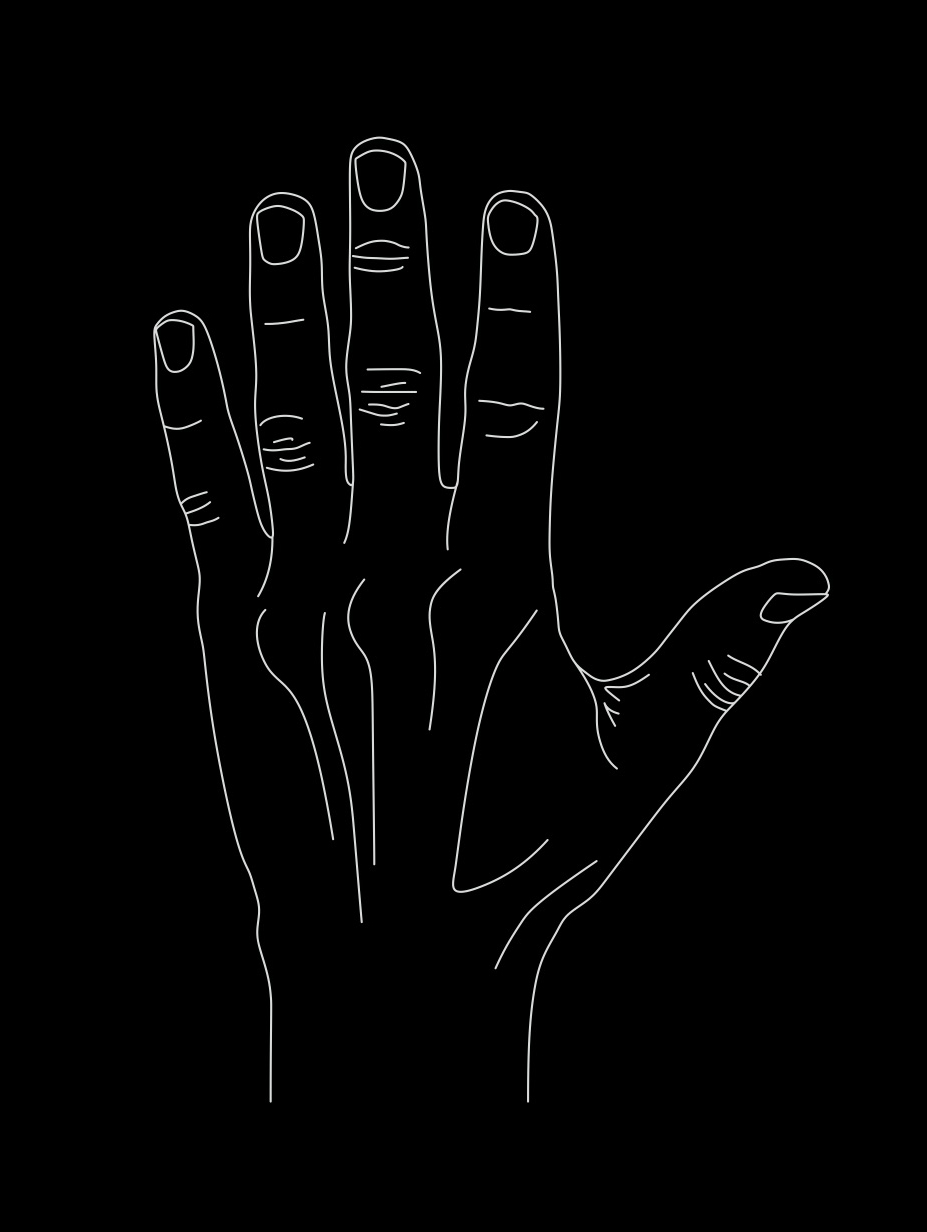 Fig. A
Fig. AThe hand is a complicated muscular mechanism (or perhaps could be called a “highly advanced piece of biotechnology”). Confronted with the challenges and errors inherent to a human workforce, Amazon invests heavily in robotic replacements. Amazon hosts robotic picking competitions with large prizes awarded to the winning robotic hands. [6] A human worker can identify, locate and select an object in less than 20 secs (Fig. E). [7]
A robot hand achieves the same task through a series of communicating cameras and different types of grasping and suction appendages (Fig. J) (Fig. M). Illustrated by frame, The MIT/ Princeton Robotic hand entry identifies and picks an item in 42 secs. It has difficulty maintaining its grip on the item (Fig. F).[8] In 2017, Amazon awarded $90,000 dollars to winning robotic hands and published papers about robotics. In addition to competitions, Amazon has an entire robotics division and funds university robotics programs.[9]
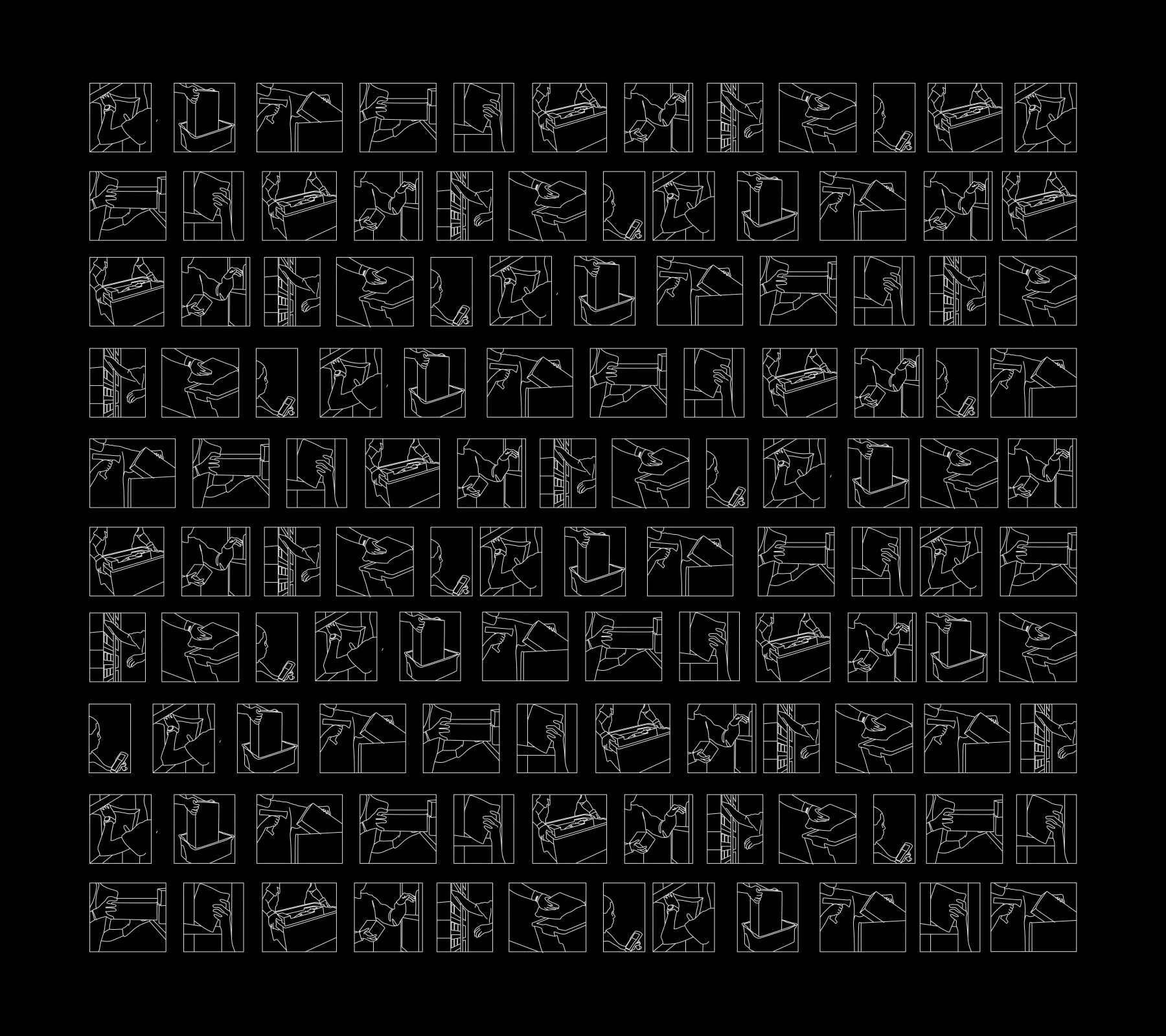 Fig. B
Fig. B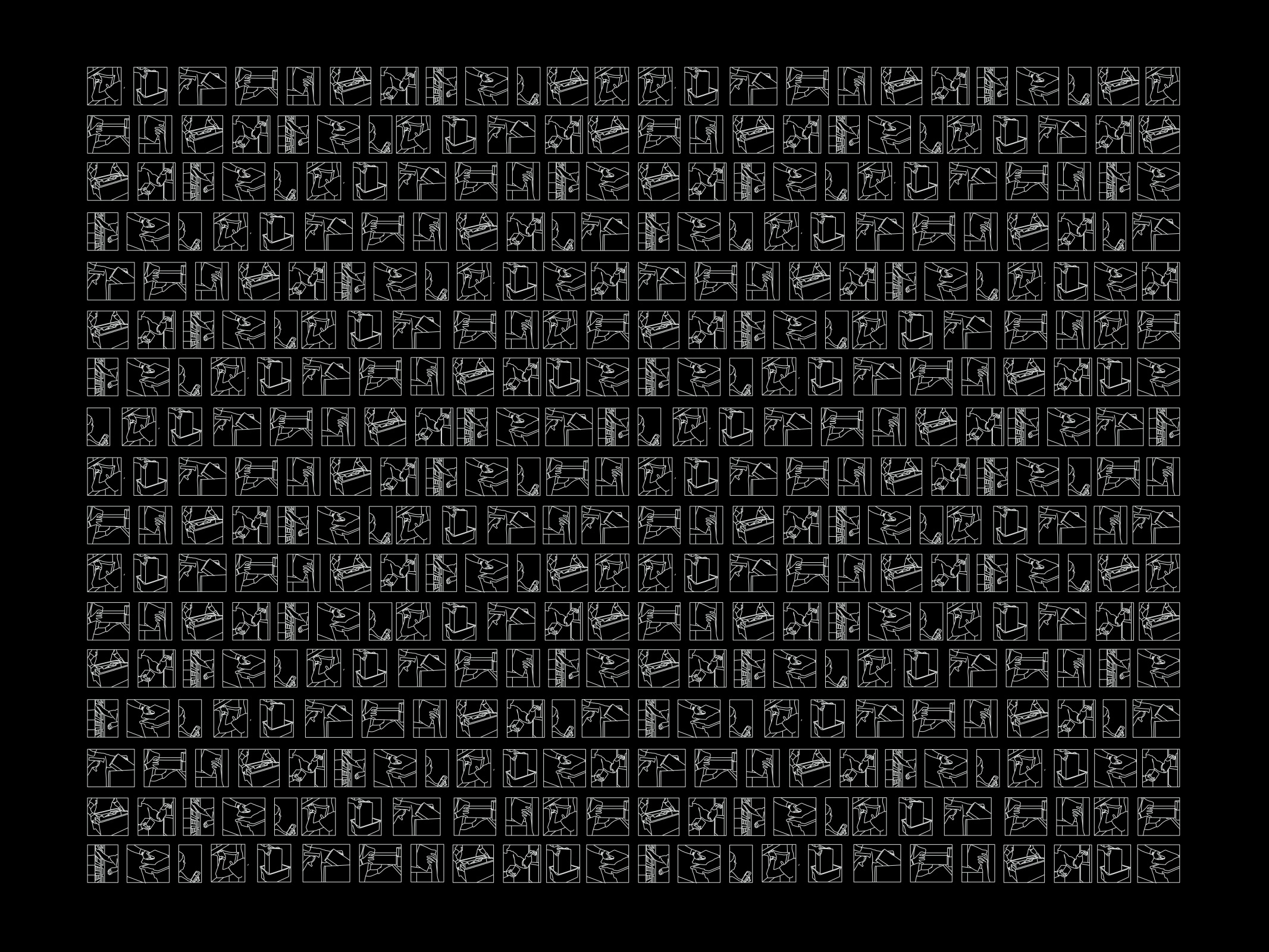 Fig. C
Fig. C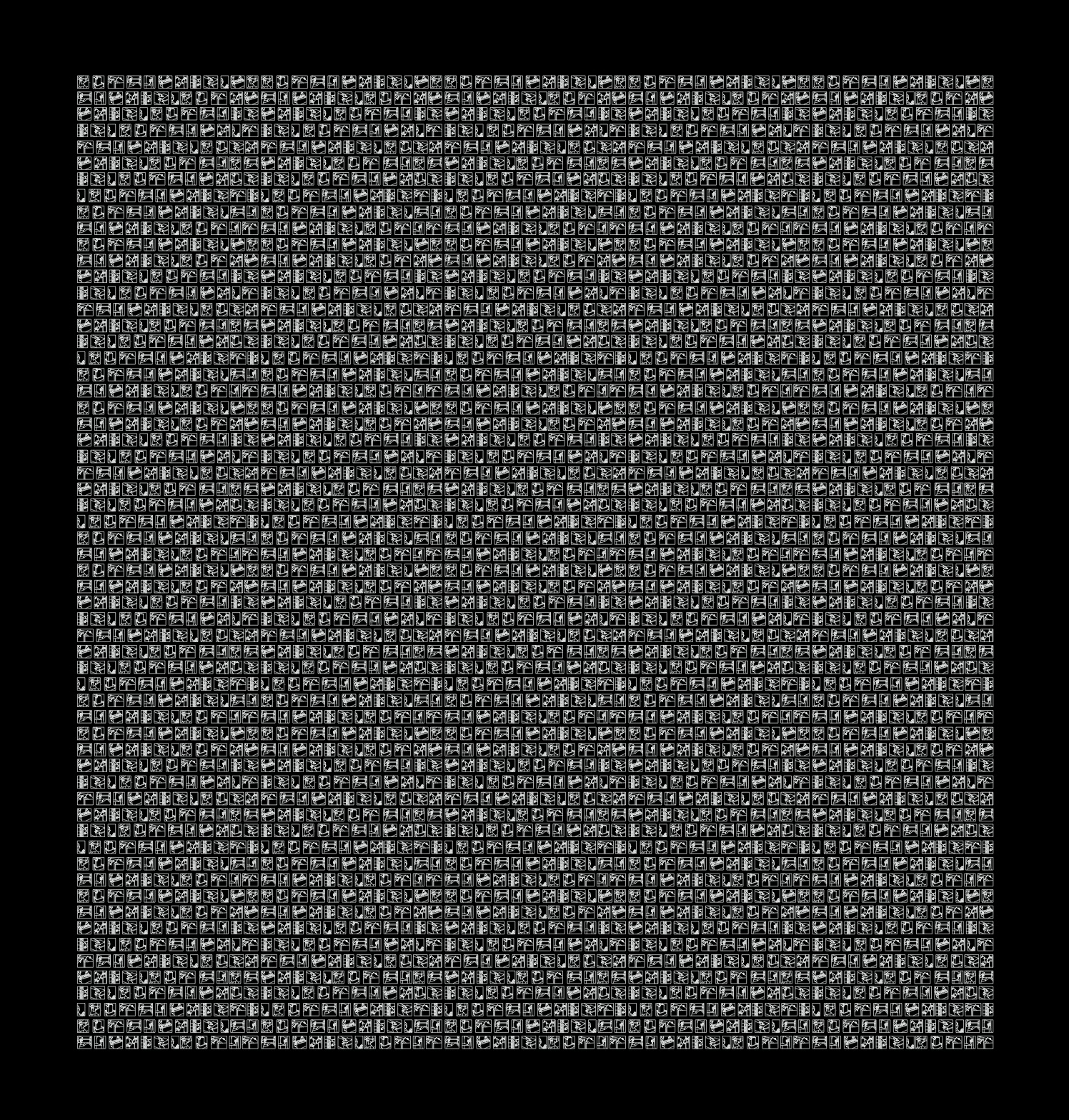 Fig. D
Fig. D Fig. E
Fig. E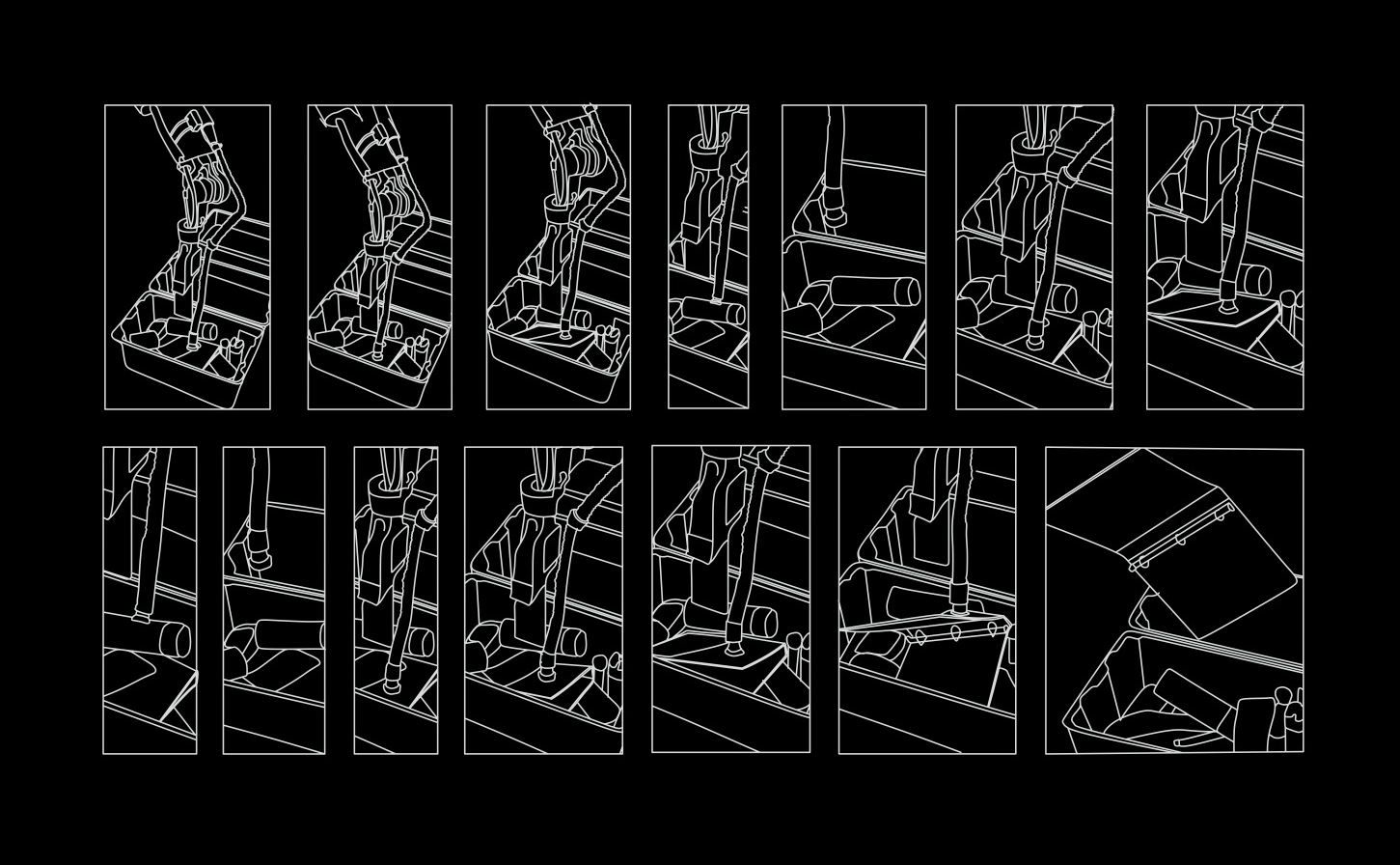 Fig. F
Fig. F Fig. G, H
Fig. G, HOn one side is the human and on the other, the technological substitute. (FIG Q) They each represent error. Where one excels, the other fails short. In composition, the fulfillment center is a changing landscape of the role of the worker—complicated and without clarity of what is to come.
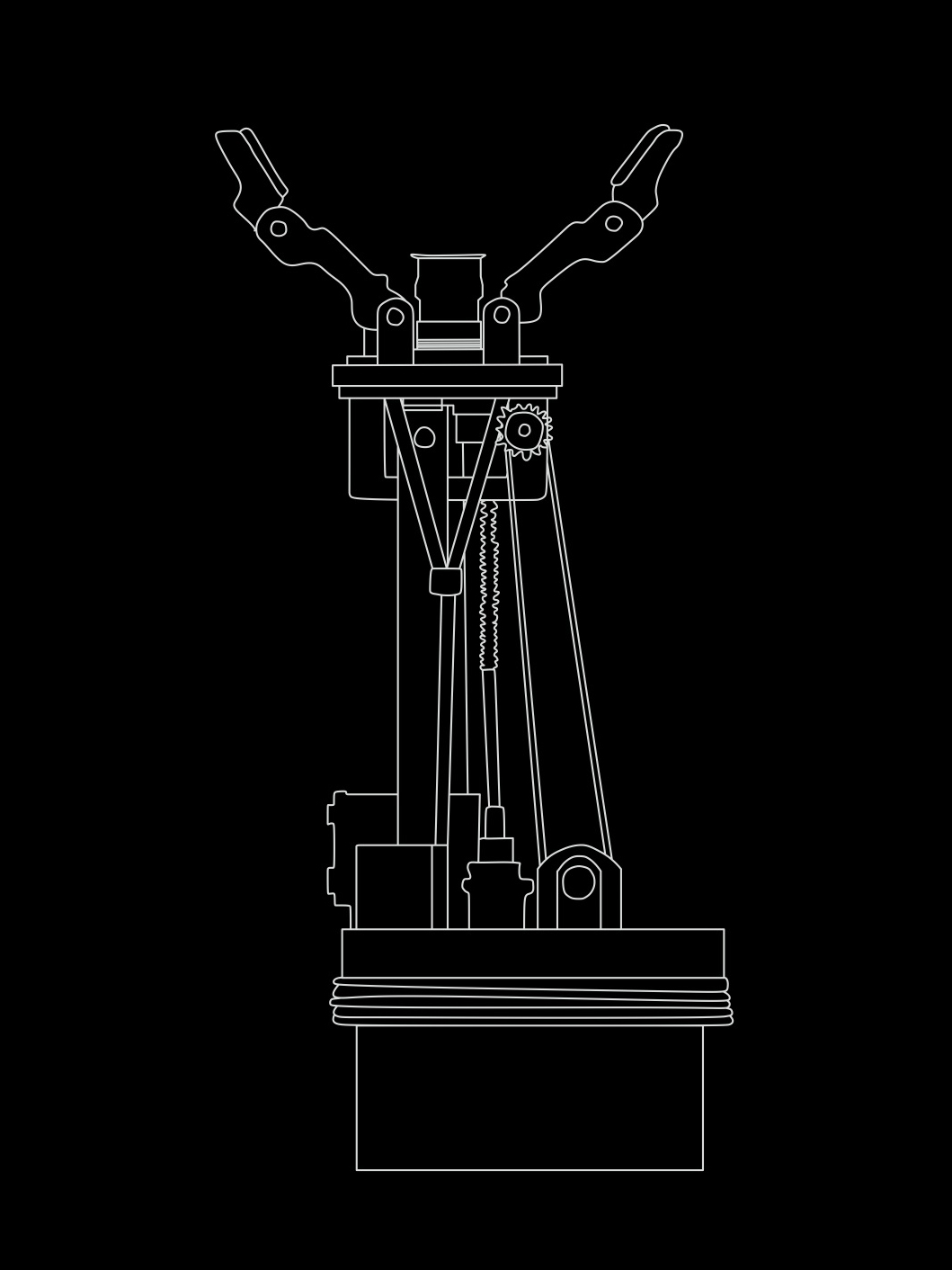 Fig. I
Fig. I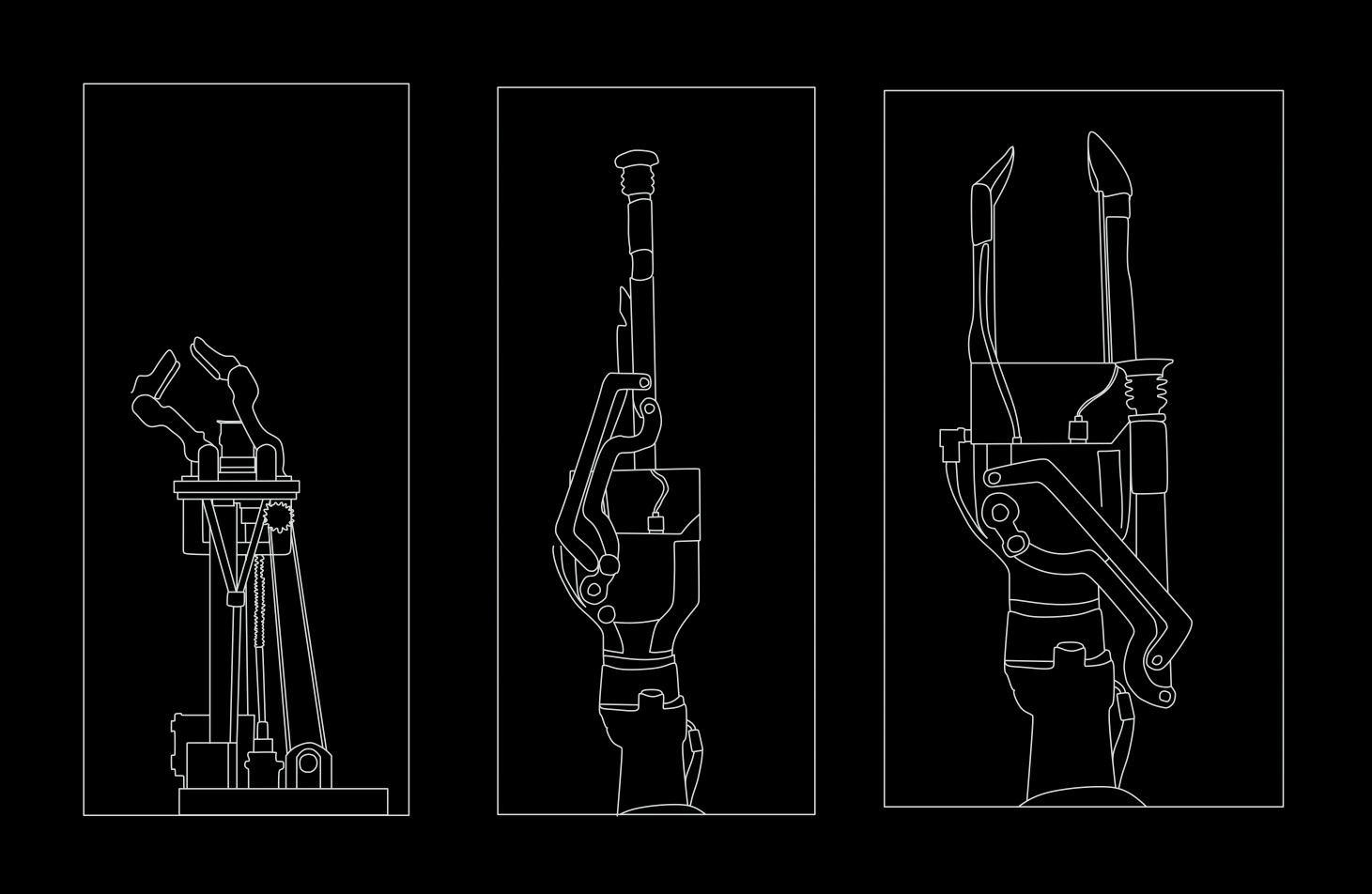 Fig. J, K, L
Fig. J, K, L Fig. M, N
Fig. M, N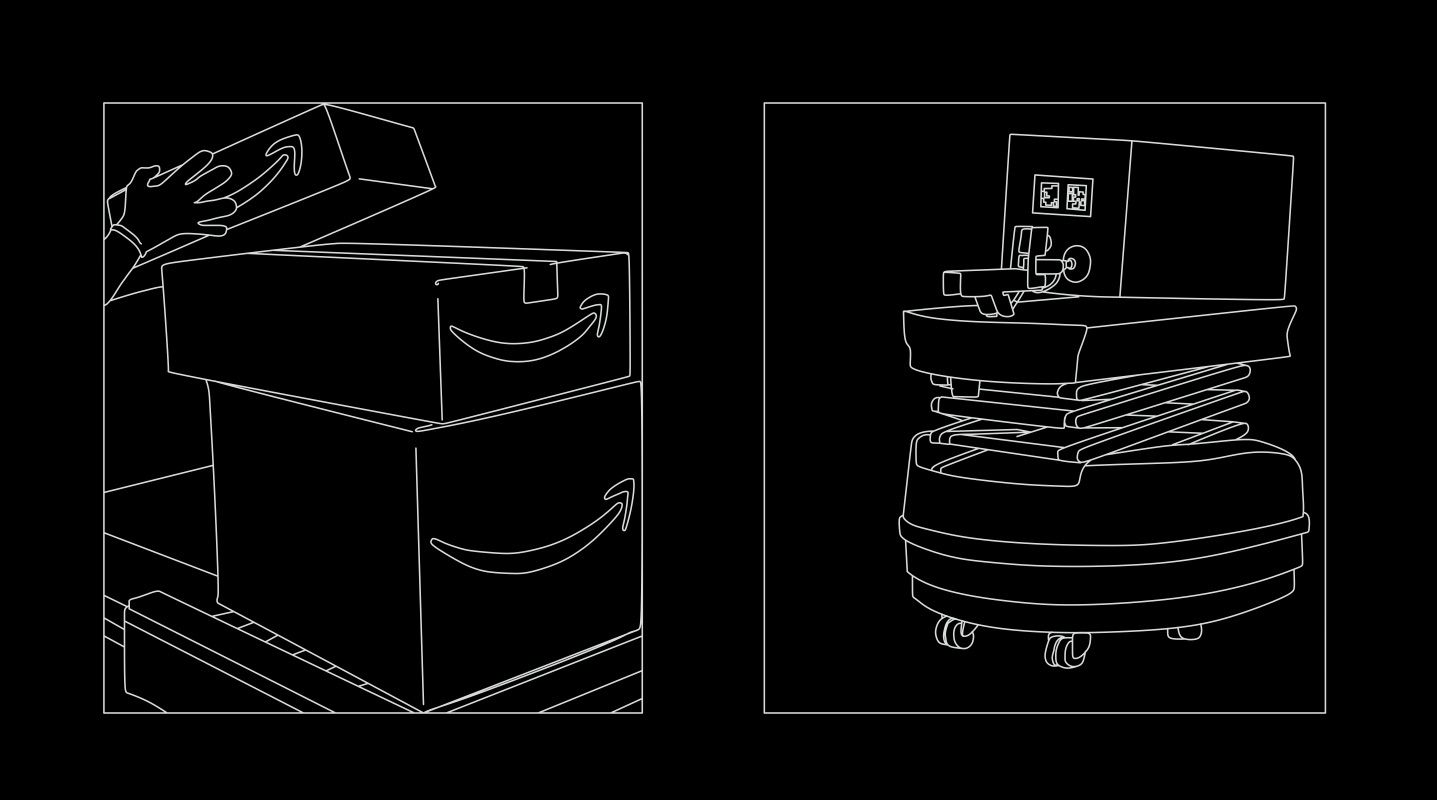 Fig. O, P
Fig. O, P Fig. Q
Fig. QWorks Cited ↗
1. Press, “Whats It Like to Work at Amazon?”
2. Sainato, “We Are Not Robots”
3. “IamA I Pack Your Things at an Amazon Fulfillment Center AMA!”
4. Sainato, “We Are Not Robots”
5. “A Dont Touch Strategy Will Dramatically Lean out Your Supply Chain!”
6. “2017 Amazon Robotics Challenge Official Rules”
7. NOVA PBS. “Meet the Amazon Robots.”
8. MIT, MCube Lab. “ICRA 2018 - Amazon Robotics Challenge 2017”
9. https://www.amazonrobotics.com
2. Sainato, “We Are Not Robots”
3. “IamA I Pack Your Things at an Amazon Fulfillment Center AMA!”
4. Sainato, “We Are Not Robots”
5. “A Dont Touch Strategy Will Dramatically Lean out Your Supply Chain!”
6. “2017 Amazon Robotics Challenge Official Rules”
7. NOVA PBS. “Meet the Amazon Robots.”
8. MIT, MCube Lab. “ICRA 2018 - Amazon Robotics Challenge 2017”
9. https://www.amazonrobotics.com